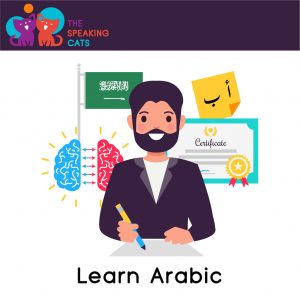Learn Arabic
The Arabic language is the language of the Noble Qur’an. Learning Arabic for non-native speakers of different nations, civilizations and religions represent a great challenge for them. Learning the Arabic language is not easy , as the meanings and aesthetics of the language are more difficult to be counted.
The methods used in teaching the language differ according to the teacher and his method of teaching, but they can be summarized as follows:
-
Begin by learning the basics of the language:
Learning at the beginning is based on learning the essence of the language before
moving towards the language and its rules. The basics of learning represent knowing
the letters of the language in writing and pronunciation, and linking them to known
objects and concepts that are known to different groups. For example, when starting
with the letter Alif (أ), the learner must know the shape of the letter in writing in the places of speech, at its beginning, middle and end, and pronounce it using the movements of opening, joining and breaking, then linking it to something known to him.

-
After the end of this stage, the learner is enriched with the largest possible linguistic outcome of the various meanings of vocabulary and words, which the learner can acquire, each according to his mental abilities and speed in acquiring language skills.
My name is Albert = اسمي ألبرت
I’m 25 years old= عمري 25 سنة
-
Train the learner to read the sentences, starting with the short ones, and
moving on to the relatively long ones. This increases the learner’s linguistic outcome on the first hand, and gives him the opportunity to learn how to properly express his thoughts and opinions.
-
Use of links: After the learner has mastered the previous language skills, He learns prepositions and linking words to form more complicated sentences and structures.
This is a dog and a cat.=هذا كلب وقطة.
This is good but expensive=هذا جيد ولكنه مكلف
-
Forming question formulas: The learner learns how to form questions using basic questioning words as where, when, why, who, etc.
What’s that?=ما هذا؟
Where are you ?=أين أنت ؟
-
Grammar: This is one of the advanced stages in learning the Arabic language, and upon reaching it, the learner will have come a long way to be able to read, write and speak well in the language field. The individual learns the parts and types of speech, dualism and plural and their types, the style of conditional and demand and others, addition, knowledge and indefinite, and so on.



